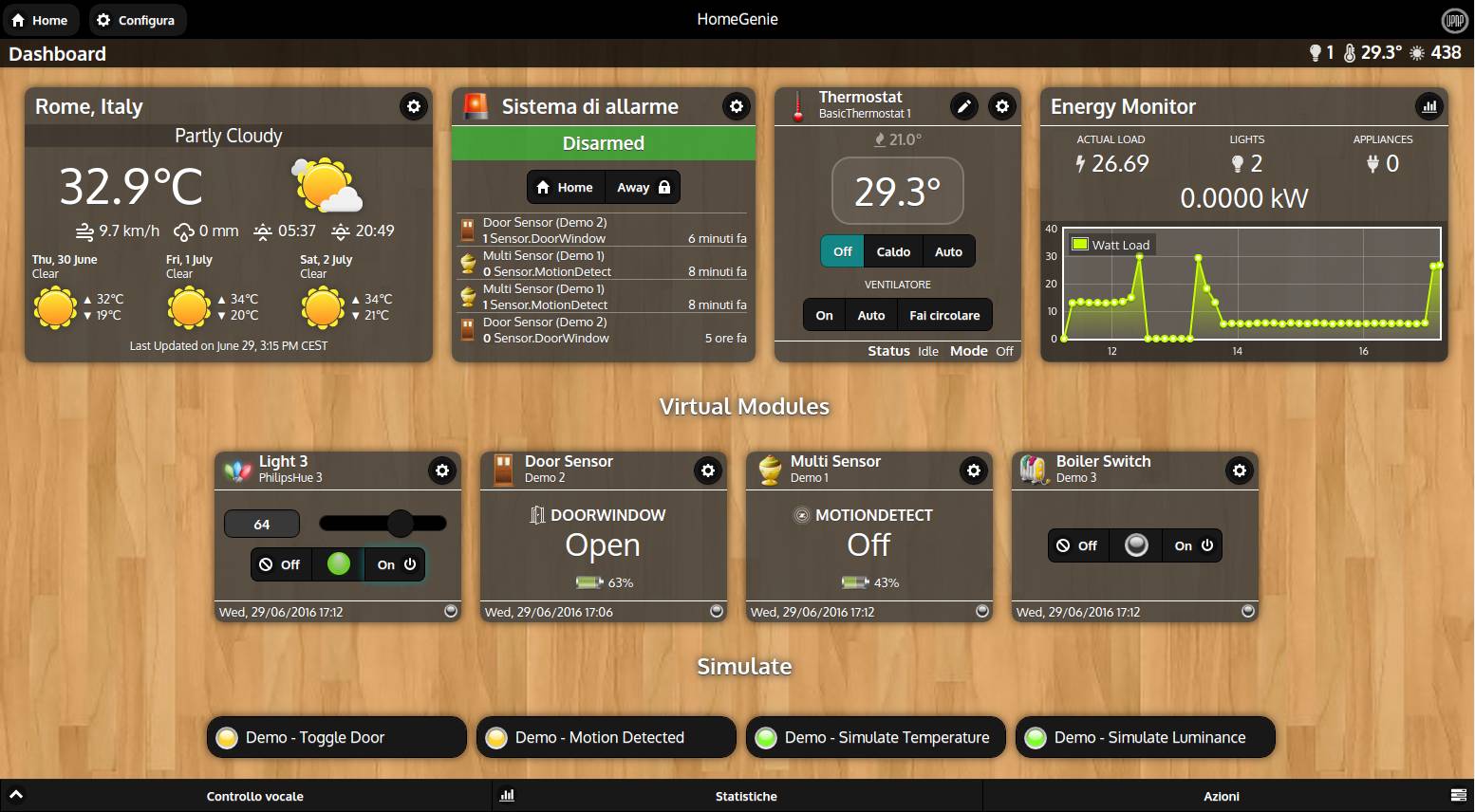
Component-based web with zuix.js
The beginning
When I started to write zuix.js, in December 2016, my intention was to re-arrange and create a library out of some code I had written back in 2012 for HomeGenie web UI.
In the picture below you can see the old, but still good, HomeGenie web UI.

The cool thing about this smart home software is that one can customize and write new widgets by using the integrated web editor (you can read more about it in the Widgets documentation page).
So, in the process of writing this new UI library, I ended up creating zuix.js, which got way beyond HomeGenie widgets by introducing the concept of loadable content, components, lazy-loading, templates, theming and much more.
Creating a component
As an example we're going to create a 'clock' component that displays the current date and time. First we include the zuix.min.js library in the head section of the document:
<script src="https://cdn.jsdelivr.net/npm/zuix-dist@1.0.0/js/zuix.min.js"></script>then we create 3 files for the mytime component:
- components/mytime.css
- components/mytime.html
- components/mytime.js
To actually load the component in the main index.html file we add the following line:
<div data-ui-load="components/mytime"></div>That's it, super-duper easy =) See the live example below.
Also simple content and templates can be split and loaded in a similar way, but there's no .js file and data-ui-include attribute is used in place of data-ui-load.
Reusability at its finest
The reusability concept is intrinsic for components. So, nothing new here. But what if we could use and reuse components, content and templates from across websites with no need of creating duplicates?
A closer look at the above example will show that we're loading two components that are physically stored on two different hosts (mytime.glitch.me and mdlcard.glitch.me).
Boosting performance
Lazy-loading is a built-in feature of this library and it can boost website speed by loading content and components only when they are visible in the screen. This can make a huge difference when dealing with big data-sets.
More Examples
Well, that is already much information for an introduction, so for now I'll leave a few links for those who want to explore further or perhaps contribute.
- zuix.js
Library website with documentation and examples. - zKit
A collection of ready to use components for modern web. - Web Starter Project
If you are familiar with Node.js you might appreciate the zuix-web-starter which is a "blank" web project featuring LESS, Markdown, Minify, ESlint checks, automatic resource packing, PWA optimizations and much more. - HGUI
Dashboard for the Internet of Things (based on zuix-web-starter).
In the meantime if you have any question or just want to say 'Hi' feel free to leave a comment down below.